Clare Watson in Nature:
 As many countries emerge from lockdowns, researchers are poised to use genome sequencing to avoid an expected second wave of COVID-19 infections. Since the first whole-genome sequence of the new coronavirus, SARS-CoV-2, was shared online on 11 January, scientists have sequenced and shared some 32,000 viral genomes from around the world. Such a vast amount of data has allowed researchers to trace the origin of COVID-19 outbreaks in their countries and pinpoint when community transmission occurred2. Now, countries that have successfully suppressed infections are entering the next phase of the COVID-19 pandemic — where there’s a risk of new cases appearing as social restrictions ease. Researchers say that genomics will be crucial to quickly track and control these outbreaks. Studies already show that outbreaks tend to be shorter and smaller when genomics is used to help contact tracing1. “When there are few cases, genomics can very quickly tell you what you’’re dealing with and therefore guide precision interventions,” says Gytis Dudas, a consulting bioinformatician at the Gothenburg Global Biodiversity Centre in Sweden.
As many countries emerge from lockdowns, researchers are poised to use genome sequencing to avoid an expected second wave of COVID-19 infections. Since the first whole-genome sequence of the new coronavirus, SARS-CoV-2, was shared online on 11 January, scientists have sequenced and shared some 32,000 viral genomes from around the world. Such a vast amount of data has allowed researchers to trace the origin of COVID-19 outbreaks in their countries and pinpoint when community transmission occurred2. Now, countries that have successfully suppressed infections are entering the next phase of the COVID-19 pandemic — where there’s a risk of new cases appearing as social restrictions ease. Researchers say that genomics will be crucial to quickly track and control these outbreaks. Studies already show that outbreaks tend to be shorter and smaller when genomics is used to help contact tracing1. “When there are few cases, genomics can very quickly tell you what you’’re dealing with and therefore guide precision interventions,” says Gytis Dudas, a consulting bioinformatician at the Gothenburg Global Biodiversity Centre in Sweden.
Several places are particularly well placed to do that because they invested in genome sequencing early in the pandemic and have a relatively small numbers of cases. Researchers in New Zealand, and at least one state in Australia decided that they would aim to sequence most coronavirus genomes in their country or state. As SARS-CoV-2 spread around the world, distinct lineages began to form as viruses circulating in different regions gradually evolved. By comparing sequences, researchers can quickly rule out possible lines of transmission if two sequences don’t match, or link together cases that do.
More here.

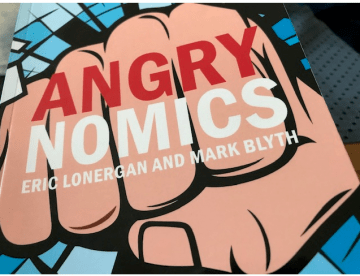 The combined total of inflation and unemployment used to be known as the “misery index”: Jimmy Carter cited it when he was campaigning in 1976 against Gerald Ford for the presidency. But the index was even higher in 1980, dooming Carter’s re-election bid. Barack Obama reduced the misery index during his two terms of office; indeed of all the Presidents since 1945, only Harry Truman left office with a lower misery index. But that didn’t seem to make voters happy; although Hillary Clinton (Obama’s party successor) won the popular vote, Donald Trump took enough key states to be elected. Similarly in 2016, British inflation was low and unemployment had been falling for years, yet voter anger resulted in Britain voting to leave the EU.
The combined total of inflation and unemployment used to be known as the “misery index”: Jimmy Carter cited it when he was campaigning in 1976 against Gerald Ford for the presidency. But the index was even higher in 1980, dooming Carter’s re-election bid. Barack Obama reduced the misery index during his two terms of office; indeed of all the Presidents since 1945, only Harry Truman left office with a lower misery index. But that didn’t seem to make voters happy; although Hillary Clinton (Obama’s party successor) won the popular vote, Donald Trump took enough key states to be elected. Similarly in 2016, British inflation was low and unemployment had been falling for years, yet voter anger resulted in Britain voting to leave the EU. Julia Wellner and other crew members for this year’s Thwaites Glacier Offshore Research Project stepped onto the deck of the research vessel/icebreaker (RV/IB) Nathaniel B. Palmer in January, leaving from a crowded pier in Punta Arenas, Chile, and sailing to west coast of Antarctica.
Julia Wellner and other crew members for this year’s Thwaites Glacier Offshore Research Project stepped onto the deck of the research vessel/icebreaker (RV/IB) Nathaniel B. Palmer in January, leaving from a crowded pier in Punta Arenas, Chile, and sailing to west coast of Antarctica.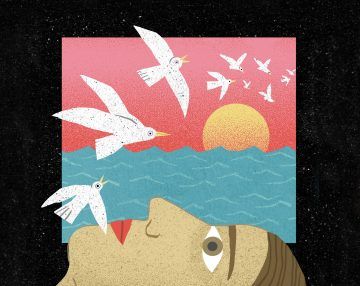 When in mid-March “
When in mid-March “ Adam Horovitz was born in Manhattan, in 1966, and raised there by his mother, the artist Doris Keefe. His father, the playwright Israel Horovitz, left the family in 1969. New York in the seventies was wild and lawless, which suited a young person searching for a tribe. As a teen-ager, Horovitz played in a New York punk band called the Young and the Useless. There was no imaginable future in music for him. It was just a way to pass the time, an excuse to hang out and meet people who were into the same things as he was. The Young and the Useless would often play shows with another punk band called the Beastie Boys, which consisted at the time of Horovitz’s friends Adam Yauch, Michael Diamond, John Berry, and Kate Schellenbach. In 1982, as the Beastie Boys were moving from punk to hip-hop, Berry left the band, and Horovitz, who was sixteen, replaced him. A couple of years later, they asked Schellenbach to leave, as they pursued, in Horovitz’s words, a new “tough-rapper-guy identity.”
Adam Horovitz was born in Manhattan, in 1966, and raised there by his mother, the artist Doris Keefe. His father, the playwright Israel Horovitz, left the family in 1969. New York in the seventies was wild and lawless, which suited a young person searching for a tribe. As a teen-ager, Horovitz played in a New York punk band called the Young and the Useless. There was no imaginable future in music for him. It was just a way to pass the time, an excuse to hang out and meet people who were into the same things as he was. The Young and the Useless would often play shows with another punk band called the Beastie Boys, which consisted at the time of Horovitz’s friends Adam Yauch, Michael Diamond, John Berry, and Kate Schellenbach. In 1982, as the Beastie Boys were moving from punk to hip-hop, Berry left the band, and Horovitz, who was sixteen, replaced him. A couple of years later, they asked Schellenbach to leave, as they pursued, in Horovitz’s words, a new “tough-rapper-guy identity.” Doctorow was named after Edgar Allan Poe, who in 1846 rented a farmhand’s shingled cottage in the Bronx for $100 a year. He moved in with his young wife, Virginia, and her mother, Maria Clemm, who was Poe’s aunt. Virginia had late-stage tuberculosis and the trio had picked the Bronx for its clean air; it was also judiciously removed from the literary squabbles that swirled around Poe, as well as from the sites of his heroic drinking binges. The homestead, in what is now Fordham, was thirteen miles from the centre of New York on the New York and Harlem Railroad. Trains departed three times a day from Williams Bridge to City Hall.
Doctorow was named after Edgar Allan Poe, who in 1846 rented a farmhand’s shingled cottage in the Bronx for $100 a year. He moved in with his young wife, Virginia, and her mother, Maria Clemm, who was Poe’s aunt. Virginia had late-stage tuberculosis and the trio had picked the Bronx for its clean air; it was also judiciously removed from the literary squabbles that swirled around Poe, as well as from the sites of his heroic drinking binges. The homestead, in what is now Fordham, was thirteen miles from the centre of New York on the New York and Harlem Railroad. Trains departed three times a day from Williams Bridge to City Hall.
 One of the most vexing questions of the coronavirus pandemic has been how many people have actually been infected. We know that testing has been inadequate, and that many cases of the disease are mild or even asymptomatic, making them less likely to be detected. So how many cases have slipped under the radar? One way to find out the true prevalence of the disease is to test random samples of the population using a blood test that detects antibodies produced by the immune system against the virus. This is different from the swab tests that have been used worldwide throughout the pandemic, which detect the genetic material of the virus itself.
One of the most vexing questions of the coronavirus pandemic has been how many people have actually been infected. We know that testing has been inadequate, and that many cases of the disease are mild or even asymptomatic, making them less likely to be detected. So how many cases have slipped under the radar? One way to find out the true prevalence of the disease is to test random samples of the population using a blood test that detects antibodies produced by the immune system against the virus. This is different from the swab tests that have been used worldwide throughout the pandemic, which detect the genetic material of the virus itself.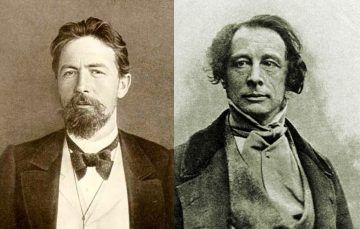 Why do we categorize novels? Fantasy, Chick Lit, Crime, Romance, Literary, Gothic, Feminist… Is it the better to find what we want, on the carefully labelled shelves of our bookshops? So that the reading experience won’t, after all, be too novel.
Why do we categorize novels? Fantasy, Chick Lit, Crime, Romance, Literary, Gothic, Feminist… Is it the better to find what we want, on the carefully labelled shelves of our bookshops? So that the reading experience won’t, after all, be too novel. It’s not surprising that Southeast Asia is home to countless ancient Buddha statues, but when one of those statues contains a mummified monk, that is certainly a surprise.
It’s not surprising that Southeast Asia is home to countless ancient Buddha statues, but when one of those statues contains a mummified monk, that is certainly a surprise.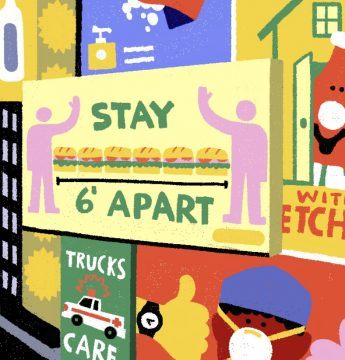 It’s jarring how easily the virus has been fused with branding and processed into the optimistic language of advertising. Every crisis begets its own corporate public service announcements — remember the
It’s jarring how easily the virus has been fused with branding and processed into the optimistic language of advertising. Every crisis begets its own corporate public service announcements — remember the  For all his resistance to “anti-art,” Judd articulated most of his motives in the negative. Above all, he was opposed to “illusionism” and “rationalism,” which, in his view, were closely linked. “Three dimensions are real space,” he wrote in “Specific Objects.” “That gets rid of the problem of illusionism.” Why did Judd object to this “relic of European art” so strongly? Again, his argument was not avant-gardist—that abstraction had voided illusionism once and for all (it hadn’t, in any case). Rather, the problem was that illusionism was “anthropomorphic,” by which he meant not simply that it allowed for the representation of the human body, but that it assumed an a priori consciousness, whereby the subject always preceded the object. In short, like composition, illusionism was “rationalistic,” a vestige of an outmoded idealism in need of expunging. “There is little of any of this in the new three-dimensional work,” Judd insisted. “The order is not rationalistic. . . . [It] is simply order, like that of continuity, one thing after another.”
For all his resistance to “anti-art,” Judd articulated most of his motives in the negative. Above all, he was opposed to “illusionism” and “rationalism,” which, in his view, were closely linked. “Three dimensions are real space,” he wrote in “Specific Objects.” “That gets rid of the problem of illusionism.” Why did Judd object to this “relic of European art” so strongly? Again, his argument was not avant-gardist—that abstraction had voided illusionism once and for all (it hadn’t, in any case). Rather, the problem was that illusionism was “anthropomorphic,” by which he meant not simply that it allowed for the representation of the human body, but that it assumed an a priori consciousness, whereby the subject always preceded the object. In short, like composition, illusionism was “rationalistic,” a vestige of an outmoded idealism in need of expunging. “There is little of any of this in the new three-dimensional work,” Judd insisted. “The order is not rationalistic. . . . [It] is simply order, like that of continuity, one thing after another.”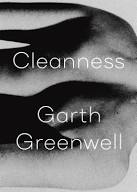 So what happens when someone sets out to write fiction that is “100 percent pornographic and 100 percent high art”? According to Garth Greenwell, that was one of his goals in writing Cleanness, a collection of stories so connected they can be read as a novel (he himself has called the book a lieder cycle) and which includes several graphic descriptions of sex, some loving and tender, some brutally S&M, and all tending to read autobiographically. (Like his fictional unnamed first-person narrator, Greenwell is gay, was raised in a southern Republican state, and has lived and taught in Bulgaria. A recent profile in The New York Times suggested that, despite these parallels, readers who assume Greenwell is writing about himself are mistaken. However, when I asked him if it would be appropriate for me to include his work in a course I taught on autobiographical fiction, and if I had his approval to do so, he said yes.)
So what happens when someone sets out to write fiction that is “100 percent pornographic and 100 percent high art”? According to Garth Greenwell, that was one of his goals in writing Cleanness, a collection of stories so connected they can be read as a novel (he himself has called the book a lieder cycle) and which includes several graphic descriptions of sex, some loving and tender, some brutally S&M, and all tending to read autobiographically. (Like his fictional unnamed first-person narrator, Greenwell is gay, was raised in a southern Republican state, and has lived and taught in Bulgaria. A recent profile in The New York Times suggested that, despite these parallels, readers who assume Greenwell is writing about himself are mistaken. However, when I asked him if it would be appropriate for me to include his work in a course I taught on autobiographical fiction, and if I had his approval to do so, he said yes.) In 1906 in England, literature was dominated by the well-behaved worlds of novelists such as Arnold Bennett, EM Forster and John Galsworthy. At the same time in Italy, Marta Felicina Faccio, who later became a leading feminist, published her first book under the pseudonym Sibilla Aleramo. A Woman is a groundbreaking, earthquaking vision, a story and a manifesto, and a literary performance so energetic it almost demands to be read aloud.
In 1906 in England, literature was dominated by the well-behaved worlds of novelists such as Arnold Bennett, EM Forster and John Galsworthy. At the same time in Italy, Marta Felicina Faccio, who later became a leading feminist, published her first book under the pseudonym Sibilla Aleramo. A Woman is a groundbreaking, earthquaking vision, a story and a manifesto, and a literary performance so energetic it almost demands to be read aloud. I
I